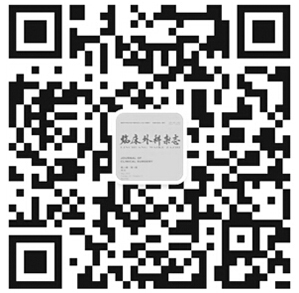|
|
Analysis of the therapeutic effects of traditional laparoscopic surgery, natural orifice specimen extraction surgery, and intersphincteric resection surgery in the treatment of low rectal cancer
LI Wenxi,ZHENG Xin,SUN Baoxin,ZHANG Haisheng,ZHU Zhida,ZHAO Enhong
JOURNAL OF CLINICAL SURGERY. 2025, 33 (6):
632-636.
DOI: 10.3969/j.issn.1005-6483.20240473
Objective To investigate the effects of traditional laparoscopic surgery,natural orifice specimen extraction surgery(NOSES),and intersphincteric resection(ISR) on treatment outcomes and quality of life in patients with low rectal cancer.Methods A total of 152 patients with low rectal cancer who were admitted from January 2020 to June 2022,and they were divided into the traditional laparoscopic group(49 cases),the NOSES group(51 cases),and the ISR group(52 cases) according to the surgical method.The operation status,postoperative recovery status,pain,anal function recovery status,quality of life and complications were compared in the 3 groups.Results The operation time of the traditional laparoscopic group [(193.98±12.31) min] was lower than that of the NOSES group [(203.54±15.02) min] and the ISR group [(199.85±11.98) min](P<0.05),operation time of NOSES group and ISR group was no difference(P>0.05).The first exhaust time [(60.21±10.05) h],the first time of getting out of bed [(37.52±6.21) h],and the length of postoperative hospital stay [(12.51±1.47) d] in the traditional laparoscopic group were all higher than those in the NOSES group [(51.06±8.67) h,(30.13±4.92) h,and(11.27±) 1.23) d] and ISR group [(53.19±9.24) h,(28.97±4.71) h,(11.73±1.35) d](P<0.05),and there were no statistically significant differences in the first exhaust time,the first time to get out of bed,and the length of postoperative hospital stay between the NOSES and ISR groups(P>0.05). There was no statistically significant difference in the Visual Analogue Scale (VAS) scores for pain at 4 hours, 24 hours, and 48 hours after surgery among the three groups (P>0.05).The VAS scores of the three groups at 24 hours after surgery were higher than those at 4 hours and 48 hours after surgery, and the difference was statistically significant (P < 0.05).The VAS scores of the three groups at 48 hours after surgery were higher than those at 4 hours after surgery, and the difference was statistically significant (P< 0.05).The NOSES group’s Wexner score [(4.93±0.76) points] at 3 months after surgery and Wexner score [(3.21±0.42) points] at 6 months after surgery were lower than those of the ISR group [(6.32±0.93) points,(4.48±0.54) points] and the traditional laparoscopic group [(5.93±0.81) points,(4.01±0.53)points](P<0.05),and the Wexner score of the 3 groups at 3 months after surgery was lower than that at 1 month after surgery(P<0.05).The EORTC QLQ-C30 score of the NOSES group at 3 months after surgery was (74.82±4.01) points, and that at 6 months was (85.49±4.93) points, which were higher than those of the ISR group [(67.05±5.03) points and (71.64±4.21) points] and the traditional laparoscopic group [(70.42±3.92) points,(76.28±4.48) points](P<0.05),and the EORTC QLQ-C30 scores of the traditional laparoscopic group at 3 and 6 months after surgery were higher than those of the ISR group, and the difference was statistically significant (P < 0.05). The EORTC QLQ-C30 score of the 3 groups at 6 months after surgery was higher than that before surgery and 3 months after surgery(P<0.05),and the EORTC QLQ-C30 score of the 3 groups at 3 months after surgery was higher than that before surgery(P<0.05).There was no significant difference in the incidence of total complications among the three groups(P>0.05).Conclusion Compared with traditional laparoscopic surgery for low rectal cancer,the NOSES and ISR methods accelerate postoperative bowel function recovery,and the NOSES methods have advantages in anal function recovery and better and satisfactory quality of life.
Related Articles |
Metrics
|

 Table of Content
Table of Content
 Table of Content
Table of Content